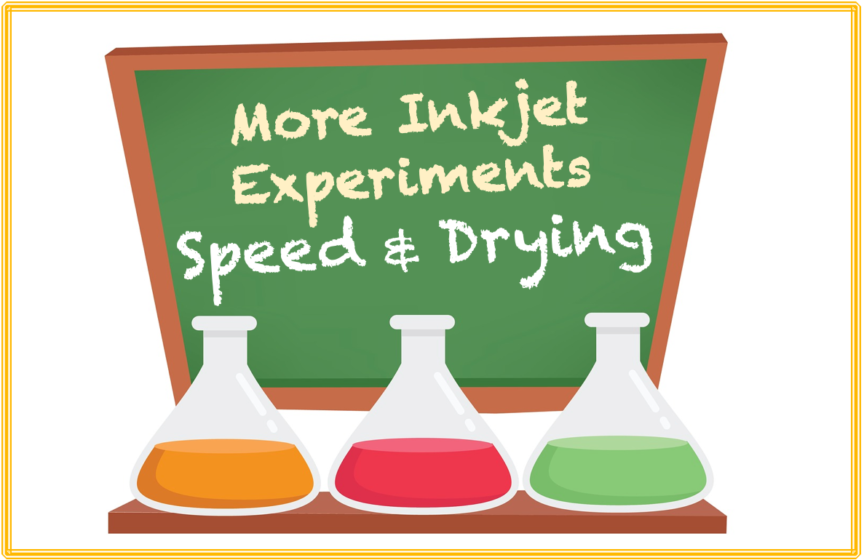If you own an Inkjet press, part of your on-going process should include some experimentation. Experimentation with different substrates, different ink settings, and different profiles help the production team understand the opportunities your press enables. The first episode was about paper, with ideas on how different substrates can add product opportunities. The second episode was about ink density, with thoughts on how experimenting with ink levels can expand your understanding of how ink profiles and curves impact the printed product.
This episode covers several other experiments we will group under speed and drying.
Remember to ensure that you understand all the instructions and training your vendor provided and have a good level of comfort with how your press behaves as it produces the work you do today. The point of experimenting with print speed and drying is to expand your understanding of how these elements impact your final product. With experimentation, you will learn what works best for your environment.
The Need for Speed
The speed at which you print touches several aspects of your capabilities. The first is throughput. On a continuous-feed press, you may have more degrees of freedom in print speed. The faster you can print, the greater your capacity. Conversely, slowing the press down reduces your throughput. On some inkjet presses there are almost unlimited press speeds, while others are more gated. Whichever type of press you have, learn as much as you can from your vendor about what control you have over speed. If you can adjust your print speed, try these experiments:
- Take a low coverage job. Think in terms of bills, statements, and light coverage direct mail.
- Run the job (or a portion of the job) at the speed you normally print as your baseline.
- Run the job slower. You might cut the speed in half, or you might dial it back by 25%. Pick a slower speed and print.
- Run the job at a higher speed. You may have limits to how much faster you can go, but if you can – dial it up.
- Take a high coverage job. Think in terms of posters and graphically rich marketing collateral.
- Run the job (or a portion of it) at the speed you normally print as your baseline.
- Run the job slower. You might cut the speed in half, or you might dial it back by 25%. Pick a slower speed and print.
- Run the job at a higher speed. You may have limits to how much faster you can go, but if you can, dial it up.
- Take all the output and lay it side-by-side to compare the results.
You may find that the production speed you use is perfect, but you may also learn that a slower or faster print speed gives you visual results to consider. In addition to speed, if your press permits it, also experiment with drying.
Your Drying Options May Vary
The combination of speed and drying temperatures may also open up additional options for substrates. Your vendor will have recommendations for dryer settings, if you can control them, but also try turning the drying up and down on known jobs to see how it impacts the jobs. Some substrates may react better to lower temperatures, while others may dry more optimally at slightly higher temperatures. Take the time to consider the drying technology your device uses and compare output across both speed and drying variations.
None of these experiments is meant to override the training from the vendors, but they are meant to help the production team understand all of the options available as they gain more experience. Whatever adjustments your vendor allows you to control, try them. The more you understand, the more you should be able to work with unusual substrates.
Those are the three inkjet experiments designed to help you push the limits of what your inkjet press can do. Try them and see what happens. Over time as new options come to your press or new substrates come to market, try these three experiments again and keep track of what you learn!
Remember, there are a million questions in inkjet city! Have questions? Ping me on LinkedIn or drop a note to pcm@mcgrewgroup.com.

